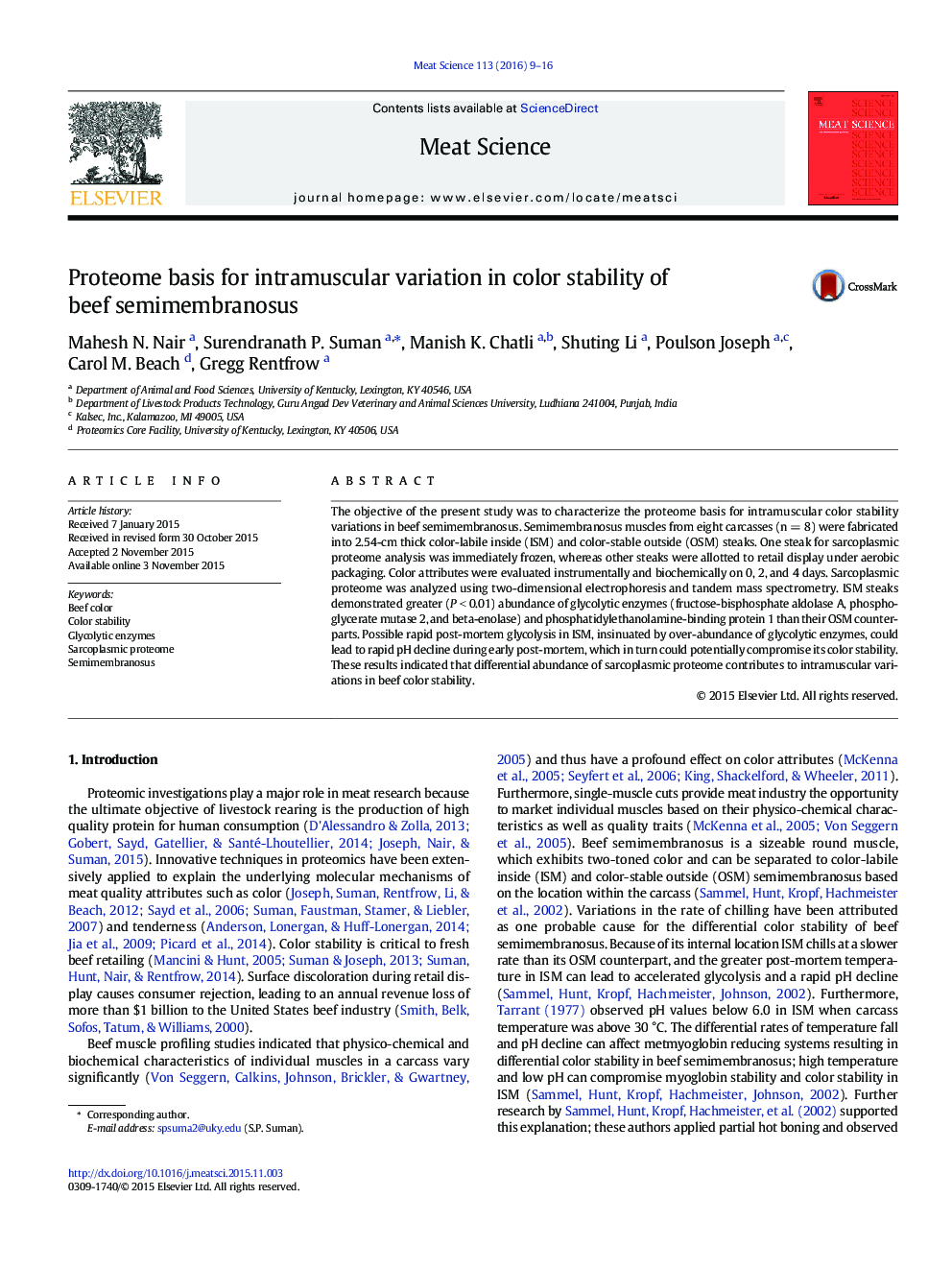| کد مقاله | کد نشریه | سال انتشار | مقاله انگلیسی | نسخه تمام متن |
|---|---|---|---|---|
| 2449623 | 1554081 | 2016 | 8 صفحه PDF | دانلود رایگان |
• Inside and outside beef semimembranosus regions exhibit color stability variations.
• Proteome basis for the intramuscular variation in color stability was examined.
• Glycolytic enzymes were over-abundant in color-labile inside semimembranosus.
• Differences in sarcoplasmic proteome contribute to intramuscular variations.
The objective of the present study was to characterize the proteome basis for intramuscular color stability variations in beef semimembranosus. Semimembranosus muscles from eight carcasses (n = 8) were fabricated into 2.54-cm thick color-labile inside (ISM) and color-stable outside (OSM) steaks. One steak for sarcoplasmic proteome analysis was immediately frozen, whereas other steaks were allotted to retail display under aerobic packaging. Color attributes were evaluated instrumentally and biochemically on 0, 2, and 4 days. Sarcoplasmic proteome was analyzed using two-dimensional electrophoresis and tandem mass spectrometry. ISM steaks demonstrated greater (P < 0.01) abundance of glycolytic enzymes (fructose-bisphosphate aldolase A, phosphoglycerate mutase 2, and beta-enolase) and phosphatidylethanolamine-binding protein 1 than their OSM counterparts. Possible rapid post-mortem glycolysis in ISM, insinuated by over-abundance of glycolytic enzymes, could lead to rapid pH decline during early post-mortem, which in turn could potentially compromise its color stability. These results indicated that differential abundance of sarcoplasmic proteome contributes to intramuscular variations in beef color stability.
Journal: Meat Science - Volume 113, March 2016, Pages 9–16
